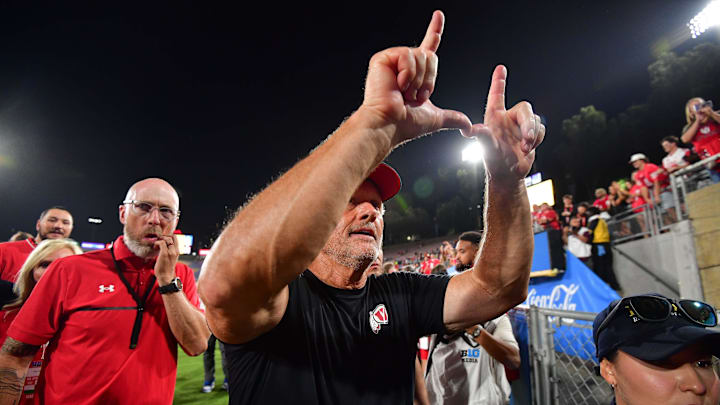As the college football season moves into Week 3, the Big 12 is quietly assembling one of the strongest starts among the Power Five conferences. With three teams ranked in the latest AP Top 25 and six others receiving votes, the conference is showcasing its depth, rising competitiveness, and growing national respect. Few expected the top of the conference to look this strong, but here we are with multiple Big 12 programs threatening to crash the College Football Playoff conversation come November.
The Three Top 25 Ranked teams
Iowa State, Texas Tech, and Utah lead the way as the Big 12’s three ranked teams. Iowa State has picked up where it left off, combining defensive discipline with much-improved quarterback play. Rocco Becht has shown steady development, and head coach Matt Campbell continues to instill a strong culture that sustains success year after year. Texas Tech has surged back into national relevance with a physical, explosive brand of football. Their aggressive approach to the transfer portal, along with significant NIL investment, shows that quick turnarounds are not only possible, but increasingly common in the modern game. Meanwhile, Utah is reminding everyone why it has long been one of the most consistent and underrated programs in college football. After a down season in 2024, many forgot just how tough and well-coached Kyle Whittingham’s team can be. This year, they’re back in the spotlight and adding serious weight to the Big 12’s resume.
Six More Teams Knocking On The Door
Beyond the ranked teams, six more Big 12 programs received votes in this week’s AP Poll: Kansas, Houston, Arizona State, BYU, Baylor, and TCU. That’s nearly half the conference either ranked or on the verge showing clear evidence of how deep and competitive the league has become. Kansas is generating real buzz thanks to an elite offense under head coach Lance Leipold, although the Jayhawks will go only as far as their defense allows. Houston has started the season undefeated, an unexpected development, but their true level will be revealed during the grind of conference play. Arizona State and BYU have both shown flashes of high-end potential. ASU suffered a late-game collapse against Mississippi State that cost them an early statement win, while BYU has continued to look dominant despite not having last year’s starting quarterback, Jake Retzlaff. Baylor remains dangerous thanks to its offensive firepower, but its defense continues to lag behind. TCU is harder to evaluate this early, but there’s still plenty of time for the Horned Frogs to show progress and assert themselves as contenders. These programs may not be in the Top 25 just yet, but AP poll voters are clearly watching.
Depth of The Conference
All this depth raises a valid concern: could the Big 12 end up cannibalizing itself with so many strong teams? While that’s a fair question, the same could be said about the SEC—only the SEC benefits from the brand power and long-standing bias that keeps its teams ranked even through early losses. The difference often comes down to the name of the conference. That SEC bias is real. It’s not to say the SEC lacks elite teams, it clearly doesn’t, but it’s time to start giving the Big 12 the respect it’s earning on the field.
This level of national recognition matters more than ever. Rankings influence media coverage, recruiting momentum, bowl selections, and the broader playoff conversation. Having this many Big 12 teams already ranked or just outside the Top 25 is a major win for the conference. It gives the league the credibility and leverage it has long sought, especially during a time of realignment and shifting power dynamics across college football. The conference’s strong early showing may prove crucial not just in 2025, but in shaping its long-term position within the sport.
The road for Oklahoma State gets even more challenging. This is a team looking to get back into contention sooner rather than later but facing this stiff of competition makes that even more challenging. OSU wasn't looked at as one of the top teams in the conference preseason but for a team coming off a brutal 2024 season and a coach on the hot seat, this just adds more to their rigiorous road ahead. Staying the course and focusing on a week to week matchup basis will help them ease tensions when looking at their schedule as a whole. Constant improvements will go a long way when viewing their 2025 season. Stay competitive and show flashes of potential.
As the season continues, matchups within the Big 12 will become increasingly important. Ranked teams will be looking to protect their status, while others aim for breakthrough moments that push them into the national spotlight. What would make things even more fair and exciting is if the AP poll began to rank teams based purely on merit—judging what they've done on the field, not their logo or preseason expectations. Each program should be evaluated individually and fairly. If that happens, and if this early-season trend continues, the Big 12 could soon find itself with even more representation in the Top 25 and a legitimate claim as the deepest conference in college football.
